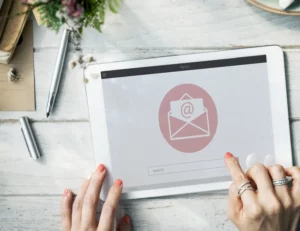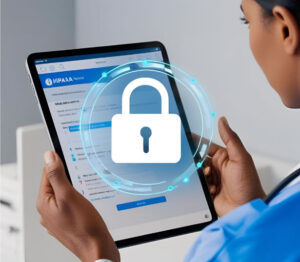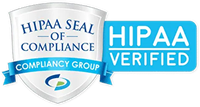In today’s digital landscape, email remains a primary channel for exchanging sensitive information—ranging from personal data to confidential business communications. However, emails are vulnerable to interception, hacking, and unauthorized access if not adequately protected. That’s why email security is critical for safeguarding privacy, ensuring compliance, and maintaining trust. One of the most effective measures to enhance email security is email encryption.
An email encryption certificate is a digital credential that facilitates encrypted communication. It verifies your identity and enables your email client to encrypt messages so that only intended recipients, with the proper decryption keys, can read the information. In addition, these certificates support digital signatures, enabling recipients to confirm the sender’s identity and verify that messages haven’t been altered during transmission. Essentially, an email encryption certificate serves as the cornerstone for establishing secure and trustworthy email exchanges.
Understanding Email Encryption Certificates
An email encryption certificate is a digital document issued by a trusted Certificate Authority (CA). It contains the user’s public key, along with identification details, and functions as a secure digital ID for email communication. When integrated into email clients, these certificates enable users to encrypt messages, sign emails, and verify the authenticity of incoming messages.
At its core, these certificates are part of Public Key Infrastructure (PKI), a framework that manages digital certificates and encryption keys. In PKI, each user has a pair of keys: a public key, which can be shared openly, and a private key, which is kept confidential and secret. When you send an encrypted email, your client uses the recipient’s public key to encrypt the message. Only the recipient’s private key can decrypt it, ensuring confidentiality. Conversely, signing an email involves encrypting the message with your private key, allowing recipients to verify your identity using your public key.
There are different types of email encryption certificates, with S/MIME (Secure/Multipurpose Internet Mail Extensions) certificates being among the most common. S/MIME certificates are specifically designed for email encryption and signing, providing a standardized way for users to secure their email communications through certificates issued by trusted Certificate Authorities. These certificates are widely supported across enterprise email platforms and are a cornerstone of secure corporate email practices.
The Importance of Email Encryption Certificates
Email encryption certificates provide essential benefits that protect the confidentiality and integrity of digital communication. Primarily, they significantly enhance security by encrypting email content, making it unreadable to unauthorized parties if intercepted. This encryption ensures that sensitive information—such as personal details, financial data, or corporate secrets—remains confidential throughout its transmission and processing.
Beyond security, email encryption certificates also guarantee data integrity. When messages are signed with a certificate, recipients can verify that the claimed sender genuinely sent the email and that it has not been altered in transit. This verification is crucial in preventing impersonation, spoofing, and tampering, which could otherwise result in misinformation, fraud, or legal disputes.
In many scenarios, encryption certificates are crucial for maintaining compliance and trust. For example:
- Business communications involving confidential negotiations or proprietary information
- Legal matters where verified, tamper-proof exchanges are required
- Handling PII (Personally Identifiable Information) such as health records or financial data, where privacy laws demand robust protections
- Regulatory compliance in sectors like healthcare and finance, where encryption is often mandated by law
In each case, email encryption certificates help organizations uphold security standards, protect client and employee data, and avoid costly penalties associated with data breaches.
Types of Email Encryption Certificates
Email encryption certificates are generally categorized into two main types:
- Personal (Individual) Certificates
- Issued to individual users.
- Used primarily for personal or small-scale organizational secure email communication.
- Suitable for professionals or employees who need to encrypt and sign emails individually.
- Advantage: Easy to manage for single users, supports identity verification, and enables digital signing.
- Organizational (Group) Certificates
- Issued to entities or groups, often within a corporate environment.
- Designed for multiple users or departments to ensure consistent security standards.
- Ideal for organizations that require centralized management, access controls, and policy enforcement.
- Advantage: Facilitates secure communications across teams or entire organizations, streamlining compliance.
Self-Signed vs. CA-Issued Certificates
Self-Signed Certificates:
- Generated and signed by the entity itself without involving a third-party CA.
- Suitable for testing, internal use, or environments where trust is already established.
- Trust Level: Low; recipients may see warnings or distrust the certificate unless manually trusted.
CA-Issued Certificates:
- Issued by trusted Certificate Authorities recognized by most email clients and browsers.
- Verify the identity of the certificate owner through rigorous validation procedures.
- Trust Level: High; widely accepted and automatically trusted by recipient email systems, making them ideal for external communications and compliant environments.
In summary, organizations and individuals should weigh their security needs against trust levels when choosing between self-signed and CA-issued certificates. For external communications requiring trust and compliance, CA-issued certificates are strongly recommended.
How to Obtain an Email Encryption Certificate
Step 1: Choosing a Certificate Authority (CA) or Encryption Service. Start by selecting a reputable CA that offers S/MIME certificates suitable for email encryption. Popular providers include DigiCert, GlobalSign, Sectigo, and Entrust. Compare their offerings based on cost, validation process, warranty, support, and whether they provide certificates tailored for individual or organizational use. Some organizations opt for managed services that simplify certificate management and administration.
Step 2: Generating a Certificate Signing Request (CSR) Most CAs require you to generate a CSR—a file containing your public key and identifying information.
- On Windows (via Outlook or certificate management tools): Use built-in certificate management tools or third-party utilities like Keychain Access (macOS) or OpenSSL.
- On Windows with certreq: Use the Certificate Enrollment wizard or certreq command-line utility.
- In email clients: Some email applications allow CSR generation directly from their security settings.
Ensure that the information provided (e.g., your email address, domain, organization info) matches your identity and usage context.
Step 3: Submitting the CSR or Application to the CA Upload the CSR to your chosen CA’s portal or follow their application process. You may need to create an account, accept terms, and possibly pay if a paid certificate is required.
Step 4: Verifying Identity or Domain Ownership. Most CAs perform validation before issuing your certificate:
- Email validation: The CA sends an email to your registered address to verify your identity.
- Domain validation: For organizational certificates, you may need to demonstrate control over your domain, often via email or DNS record changes.
- Organization validation: Business CAs verify your company’s legal details.
Complete the process by following the CA’s instructions. Once validated, the CA will issue your certificate.
Step 5: Installing the Certificate Download the issued certificate file (often .p12 or .pfx) and install it on your computer or device. This process involves importing the certificate into your email client or your operating system’s certificate store.
Installing and Configuring Your Email Encryption Certificate
For Microsoft Outlook:
- Open Outlook and go to File > Options > Trust Center > Trust Center Settings.
- Select Email Security > Click Import/Export and import your certificate file.
- In the Email Security tab, select your email account.
- Under Certificates and Algorithms, click Choose for signing and encryption certificates, then select your imported certificate.
- Check the boxes for “Always sign emails” and “Encrypt contents and attachments” if desired.
- Save your settings. When composing an email, the encryption and signing options should be available.
For Mozilla Thunderbird:
- Go to Tools > Options > Privacy & Security.
- Under Certificates, click View Certificates, then import your certificate (.p12 or .pfx).
- When composing an email, click the Security button (lock icon), then select Digitally Sign and/or Encrypt as needed.
Troubleshooting Tips:
- Ensure the correct certificate is associated with your email address.
- If recipients report decryption issues, verify your certificate’s validity and proper installation.
- Keep your private key secure and backed up safely.
- If encryption or signing options aren’t working, confirm that your client recognizes your certificate and that it’s configured correctly for your account.
Best Practices for Managing Email Encryption Certificates
-
Regular Updates and Renewals
- Renew certificates before expiry: Most certificates are valid for 1-3 years. Mark renewal dates and plan to prevent gaps in encryption.
- Apply updates promptly: If the CA releases security updates or recommends stronger encryption algorithms, update your certificates accordingly to maintain compliance and security standards.
-
Secure Storage of Private Keys
- Use encrypted storage: Store your private keys in secure, encrypted hardware or software key vaults, protected by strong passwords and multi-factor authentication.
- Limit access: Restrict access to private keys to authorized personnel only, and implement role-based controls.
- Backup securely: Keep encrypted backups of your private keys offline or on protected storage media. If keys are lost or damaged, proper backups ensure recovery without exposing keys.
-
Certificate Revocation
- In case of compromise: Immediately revoke any certificate suspected of being compromised or exposed. Inform your CA and update all systems to prevent continued use of invalid certificates.
- Maintain revocation records: Keep records of revoked certificates and monitor for any signs of misuse.
-
Keep Private Keys Confidential
- Never share your private key via email or unsecured channels.
- Regularly audit your key management practices to ensure ongoing security.
- Train staff on the importance of private key security and protocol adherence.
-
Monitor & Audit
- Track certificate usage and access logs regularly.
- Conduct periodic security audits to identify vulnerabilities or misconfigurations.
Common Challenges and Practical Solutions
- Compatibility Issues
- Challenge: Different email clients and platforms may have varying levels of support for encryption standards like S/MIME.
- Solution: Use widely supported standards (e.g., S/MIME with X.509 certificates). Test cross-platform compatibility early. Consider using integrated, enterprise-grade solutions that seamlessly handle multiple clients.
- Difficulties in Certificate Renewal
- Challenge: Managing multiple certificates and renewing them before expiry can be complex, especially for large organizations.
- Solution: Automate renewal processes with certificate management tools or PKI systems. Maintain renewal reminders and audit logs.
- Managing Multiple Certificates
- Challenge: Handling different certificates for multiple users or devices can lead to confusion or errors.
- Solution: Centralize certificate management with enterprise PKI solutions. Use directories and certificate lifecycle management systems for organization-wide oversight.
- User Adoption & Education
- Challenge: Users might neglect to encrypt emails or improperly install certificates.
- Solution: Conduct ongoing training sessions. Provide clear, step-by-step guides. Incentivize compliance through policies and awareness campaigns.
- Revoking or Replacing Certificates
- Challenge: If a private key is compromised, revoking and replacing the certificate can be cumbersome.
- Solution: Have procedures ready for revocation, re-issuance, and updating certificates. Ensure all users are notified of changes promptly.
Future Trends in Email Encryption and Certificates
Emerging Technologies and Their Influence
The landscape of email encryption is poised for significant evolution driven by rapid advancements in technology. Trends such as automated key management, zero-trust security models, and integrated security platforms are likely to make encryption more seamless and user-friendly, thereby reducing the burden on end-users. Organizations will increasingly adopt cloud-based PKI solutions, allowing dynamic issuance, renewal, and revocation of certificates without manual intervention.
Artificial Intelligence and Machine Learning
AI-driven tools can enhance threat detection, identify anomalous certificate activities, and automate risk assessments—helping organizations preemptively respond to potential security breaches. Machine learning can also dynamically optimize encryption protocols, ensuring that cryptographic algorithms stay ahead of emerging threats.
Blockchain and Decentralized Trust Models
Blockchain technology could revolutionize digital certificates by enabling decentralized trust mechanisms, reducing reliance on centralized Certificate Authorities. Such systems might provide a tamper-proof, transparent ledger of certificates, making validation more secure and efficient.
Impact of Quantum Computing
One of the most significant challenges on the horizon is the advent of quantum computing, which threatens to render many of the cryptographic algorithms currently used to secure email communications obsolete. In response, the industry is already researching post-quantum cryptography, which involves developing new algorithms resistant to quantum attacks. In the future, we can expect all certificate standards—like X.509—to migrate toward quantum-resistant protocols, ensuring the longevity of encrypted email.
Adoption and Integration
As encryption standards evolve, seamless integration into existing email clients and enterprise environments will be crucial. The development of user-friendly solutions that require minimal technical expertise will drive broader adoption, making encrypted email a default feature rather than an optional security layer.
Final Thoughts
Securing email communications with encryption certificates remains a cornerstone of digital privacy and compliance. The practical steps—such as obtaining certificates, installing them properly, and maintaining security practices—are essential for protecting sensitive data. As technology advances, organizations and individuals must stay informed and adaptable, leveraging innovations to bolster their security infrastructure.
Proactively investing in email encryption not only safeguards personal and organizational information but also builds trust with clients, partners, and patients. Embracing these technologies today prepares you for the evolving security landscape of tomorrow.
Start by assessing your current email security protocols. Consider obtaining a robust email encryption certificate and implementing best practices for encryption and key management to ensure secure communication. Staying proactive today helps you stay protected tomorrow.
For those eager to deepen their understanding, explore resources such as industry standards, certification programs, and cybersecurity training related to email security. Consulting with cybersecurity professionals can help tailor a comprehensive encryption strategy suited to your organization’s needs.
Take action now—secure your digital communications before vulnerabilities catch up with you.






